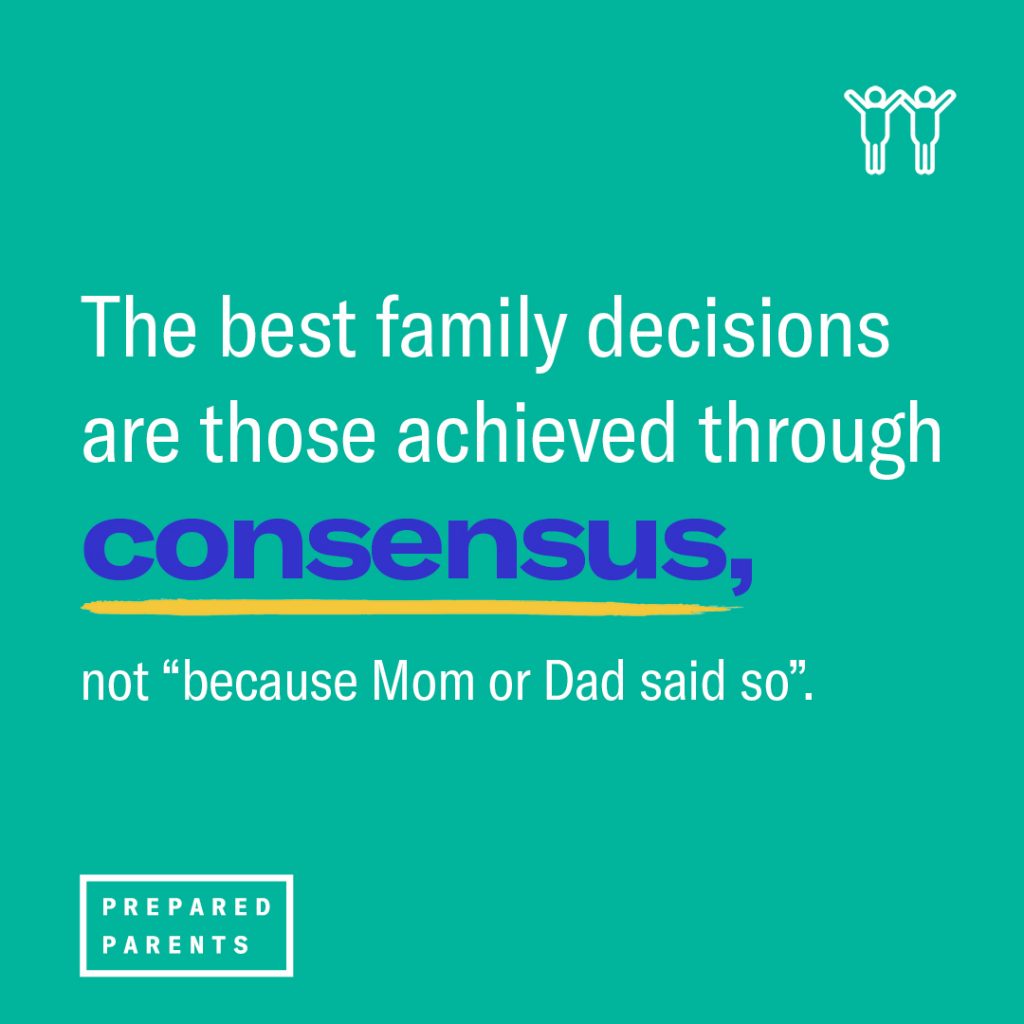Can’t figure out what to have for dinner? What TV show to watch? Who’s going to walk the dog? When tensions start to rise, one way to achieve harmony is sharing responsibility and decision making.
Make decisions by consensus. Why? It makes for effective collaboration. The best decisions are those achieved through consensus, rather than because Mom or Dad said so or through majority rule.
- Consensus as a process forces people to learn how to bring an idea forward, develop a proposal, get buy-in and see it through.
- And if someone isn’t on board, it forces that individual to learn how to be constructive and work with others to make a proposal better or different.
Consensus doesn’t mean everyone will get their way—often no one will—and it doesn’t mean everyone will be happy. But, it does mean that everyone is part of the decision.

Consensus decision-making builds trust and creates ownership and commitment. It is inclusive, engages all participants, and can lead to better quality outcomes that empower the group. It’s an important skill for kids to develop.
Every year, LinkedIn releases the Workplace Learning Report identifying key trends in the professional world. To prepare the 2020 report, LinkedIn surveyed more than 6,600 professionals in eighteen countries. Among the takeaways: universal skills are really important. The report says, “they are foundational to every employee’s success, regardless of their functional role or how the technology landscape evolves.”
The top five skills kids need most for future employment are:
- Creativity: generating original ideas and solution
- Persuasion: convincing others to support your creativity
- Collaboration: working as a team to reach a common goal
- Adaptability: thriving in change and uncertainty
- Emotional intelligence: understanding and modulating your emotions and understanding the emotions of others
While all these skills are invaluable to our kids’ success in school and in the future, they become even more powerful when they build on one another. The ability to tap into these skills will enable our kids to adapt to this rapidly changing environment. And when paired with the 16 Habits of Success, they prepare our kids to tackle academic and non-academic pursuits.
To reach consensus as a family, make a Decision Grid a household tool (see our Decision Grid template below.) While certain decisions will ultimately land with parents, kids can become part of the decision making process.
The decision grid clearly and transparently communicates who has authority to make a decision (D), who can veto a decision (V), who can make a proposal for a decision (P), and who can give input on a decision (I).
- Turn the problem into a question.
What do we want to accomplish?
What are the problems we are having?
What skills does each of us have to offer? - Discuss ways to resolve the conflict.
What are our options?
Why do you feel strongly about your option? - Develop a proposal.
Everyone should have the opportunity for input. - Choose the roles each participant will play in consensus.
Who will make a proposal?
Who will add input to the proposal?
Who will make the decision?
Who has veto power?
Who needs to be informed of the decision? - Vote and confirm the decision.
Reaching consensus can be a messy process, but a tool like the decision grid teaches kids the value of working together.


